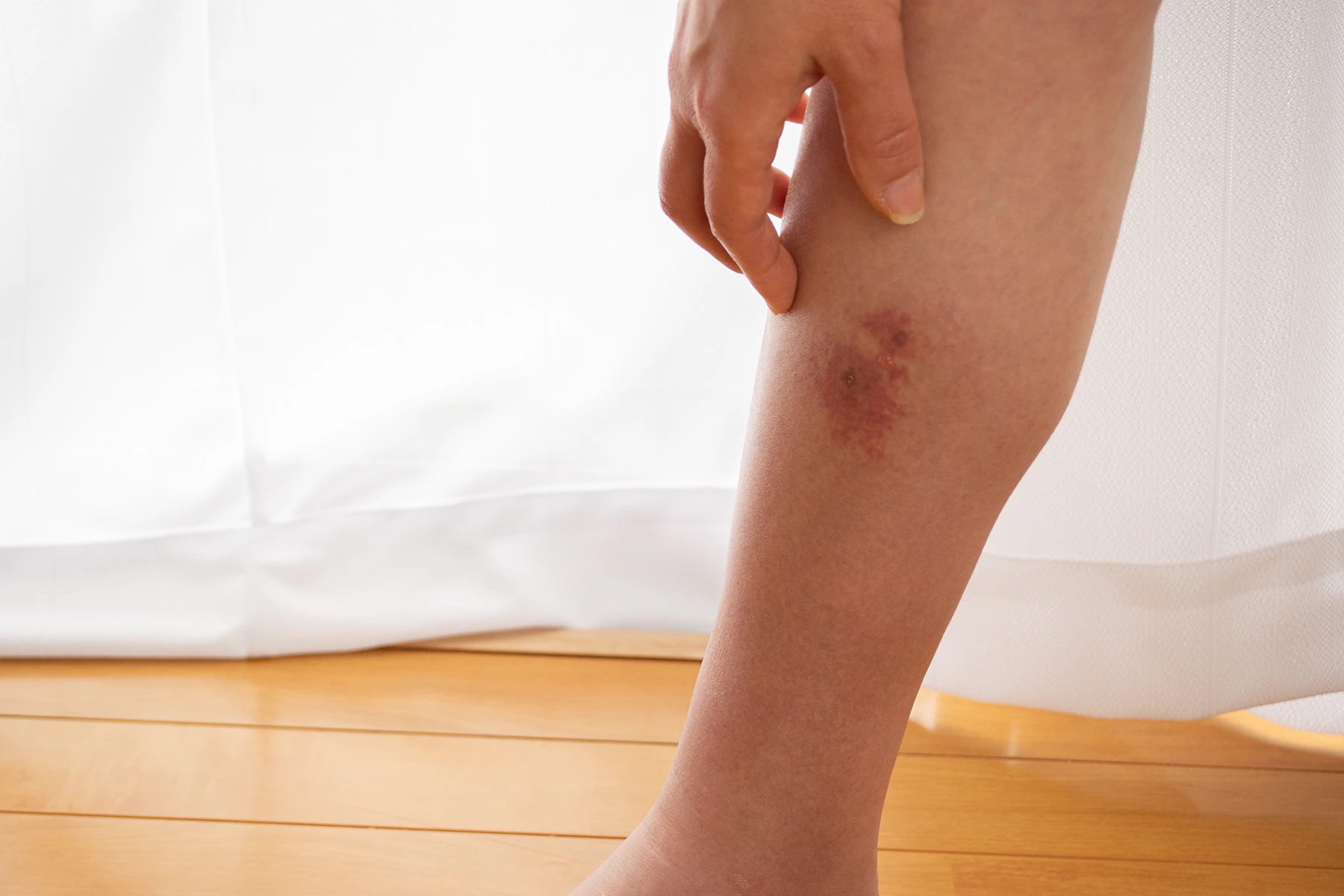Cellulitis: Understanding Risks, Symptoms, and Prevention Strategies

It can happen with a bug bite. Or a minor wound. Or a stubborn case of eczema. Even with an inadvertent cut while trimming toenails. Once the skin barrier is broken, bacteria can march right in through the open door. Too often, the result is cellulitis — an infection that can occur anywhere but is usually found in the lower legs.
Cellulitis is not to be confused with the harmless dimpling or uneven texture on thighs known as cellulite. Cellulitis is a serious infection that can cause a fever. Left untreated, it can spread to deeper skin tissues, entering the bloodstream and eventually leading to a systemic inflammatory response (sepsis), gangrene, or the rare but deadly flesh-eating necrotizing fasciitis.
Those are the worst and unusual outcomes, however.
Antibiotics treat cellulitis effectively in the overwhelming majority of cases.
“Cellulitis is very common,” says Jose A. Jaller, M.D., a dermatologist specializing in wound care at the University of Miami Health System. “It can happen anywhere there’s a break in the skin, anywhere there’s been a trauma.”
The trauma doesn’t have to be significant or memorable. That mosquito bite that has worsened in the past days? If the skin around it is swollen and red, and it’s painful and hot to the touch, it could very well be cellulitis.
Our skin, Dr. Jaller explains, “is our biggest organ of defense. It protects us from microbial invaders. But when that barrier is breached, the result can be cellulitis.”
It is estimated that about 14.5 million cases occur annually in the U.S. alone, accounting for $3.7 billion in ambulatory care costs. Yet, in most cases, the causative bacteria are actually not identified. In 15% of the cases where it is identified, the blame falls on β-hemolytic Streptococcus and Staphylococcus aureus, both of which are highly treatable with a round of antibiotics.
That said, recurring cellulitis can be a worrisome health problem, particularly in older adults who may suffer from predisposing risk factors.
“As we get older, our blood flow isn’t so great and sometimes it’s compromised,” says Jonette Keri, M.D., Ph.D., another dermatologist with UHealth. “At that point, we need to treat the underlying cause to prevent it from coming back.”
One 2022 study found recurrence rates within three years ranging from 16% to 53%. If a person was hospitalized, the recurrence rate was higher. In addition, the risk of recurrence increases with the number of episodes.
Some factors that contribute to an increased risk include:
- a weakened immune system
- certain chronic conditions, such as diabetes
- poor circulation
- chronic swelling (lymphedema or venous insufficiency)
- common afflictions, such as athlete’s foot
Of course, it’s not just the elderly or other vulnerable populations that are susceptible to cellulitis. Immunocompromised populations — individuals with HIV, uncontrolled diabetes or those taking immunosuppressant medication — run a higher risk of developing cellulitis and complications, too. (In cases like these, a patient will likely be prescribed a low-dose antibiotic taken long term to prevent further infections.)
People who inject drugs and those who do not properly care for fresh tattoos or piercings can also develop the skin infection. In addition, athletes in contact sports who might suffer skin injuries or fungal infections like athlete’s foot also run a higher risk.
Both Drs. Keri and Jaller urge patients not to assume the infection is cellulitis.
A few conditions display similar symptoms, so it’s important to get expert medical care for an accurate diagnosis. Patients with static or contact dermatitis may be misdiagnosed, but so can individuals with lymphedema, deep vein thrombosis (DVT), erysipelas (a bright red rash) and shingles.
“Not everything is cellulitis, just because it is red and swollen,” Dr. Keri adds.
To lessen the risk of cellulitis, Drs. Jaller and Keri recommend:
- Practice good skin hygiene. Use gentle soap and wash at least once daily. Cleaning skin will remove bacteria that might enter through tiny breaks in the skin.
- Moisturize daily. By preventing dryness and cracking, you’re shutting out common entry points for infection.
- Take extra care to keep new tattoos or piercings clean to avoid introducing bacteria.
- Treat any insect bite, cut, wound or fungal infection promptly. Do this by washing with soap and water and applying over-the-counter antibiotic ointment.
- Manage skin conditions, such as athlete’s foot or eczema, by using prescribed creams during flare-ups and always keeping affected areas dry and clean.
- Control the chronic conditions (diabetes, lymphedema, venous insufficiency) that make an individual more susceptible to infection.
- Wear protective clothing and gear when participating in activities that might lead to skin wounds or abrasions. This includes gardening, sports or outdoor activities.
Written by Ana Veciana-Suárez, a regular contributor to the University of Miami Health System. She is an acclaimed author and journalist who has worked for The Miami Herald, The Miami News, and The Palm Beach Post.
Tags: Bacterial skin infections, Dr. Jonette Keri, Dr. Jose Jaller, Risk factors for cellulitis, Skin infection prevention, Symptoms of skin infections
